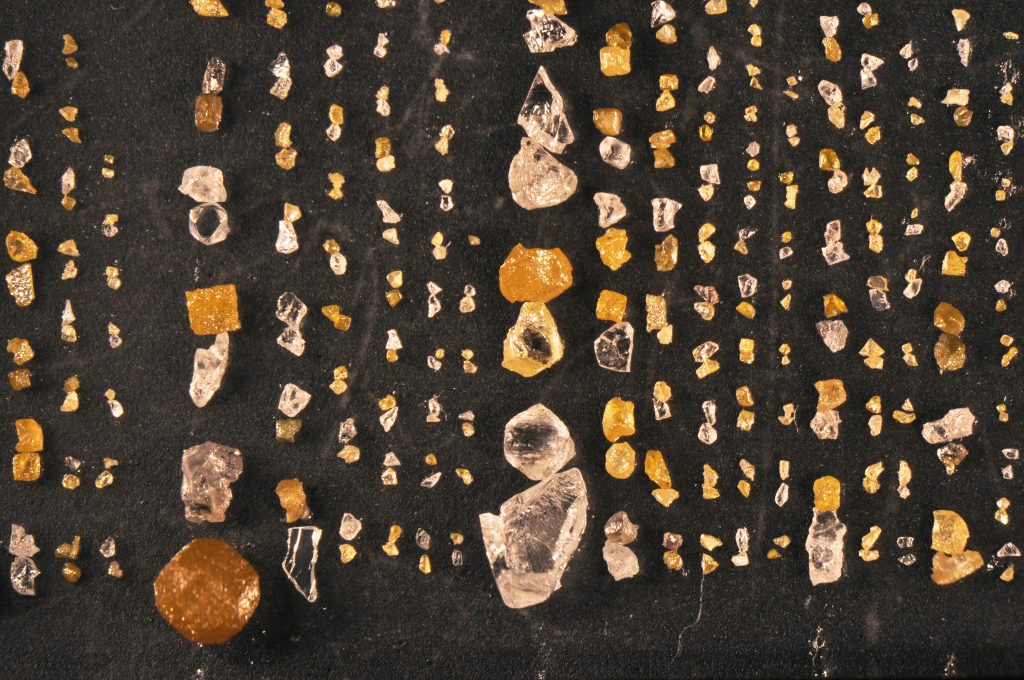Submission 2023
| Submitted by: | Andrea Pezzera |
| Department: | Earth and Atmospheric Sciences |
| Faculty: | Science |
Microphotography of necklaces of rough Koidu’s diamonds, ordered for study (0.8x).
Koidu is a locality in Sierra Leone, where diamond deposits boosted the long-lived civil war that affected the African country for about ten years and ended in 2002. They could be considered the stereotypical “blood diamonds”. The Kimberley Process today guarantees the legality of the diamonds and ensures the use of the trade profits for non-war purposes.
Like an archeological finding after the destruction of the war, the diamonds can now tell us their precious secrets about Earth’s interior. Diamond has two principal shapes, the octahedron and the cube. These forms can subsequently be corroded by unequilibrated fluids which create rough textures on their surface or even give rise to a secondary shape called “resorbed dodecahedron”. The energy of the magmatic eruption that brings the diamonds to the surface, from their deep home in Earth’s mantle, can cause their fragmentation. The last fragments haven’t been resorbed and are shinier than pieces of glass. Almost half of Koidu’s diamonds are yellow, a colour given by the particular state of the nitrogen impurities in their crystal lattice.

